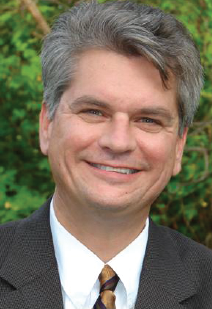
Frank J. Kros, MSW, JD
For nearly 30 years I have worked in some aspect of youth services, enjoying my time and working with some very talented colleagues and mentors. But I’m envious of today’s young youth-work professionals, program managers and COOs. You have neuroscience — and neuroscience can make you extraordinary.
Neuroscience as a discipline did not exist 100 years ago. Today, neuroscience is a thriving discipline that has provided systemic, biologically-oriented explanations for almost every aspect of human behavior and has also contributed significantly to our understanding of the learning process. At its core, youth work is concerned with connecting to young people and then teaching, through that connection, the mindset and behaviors needed for life success. So, youth work is about teaching thinking and behavior. Neuroscience reveals how learning, thinking and behavior happen in the brain. Talented youth-work professionals armed with neuroscience’s groundbreaking insights and tools can take our profession to extraordinary levels of success, and success in the youth-work world means positively changing entire life trajectories.
While there are many justifications for youth workers to develop deep knowledge about how the brain works, here are five compelling reasons why understanding and applying neuroscience will lead you to a level of skill my generation of youth workers could not achieve:
1. The brain is involved in everything young people do. In a very real sense, the brain is the object of youth work. We don’t teach to the feet or counsel to the stomach; our actions are directed to the brain. Youth workers will not only build incredible skills from neuroscience insights, the youth-work profession will develop the ethical responsibility to know everything available about how the brain works.
2. The brain is everywhere these days — which means it is accessible, practical and inexpensive. Beginning in the late 1990s, pioneering translators of neuroscience information began converting the jargon of hippocampus, thalamus and cortisol to language that educators, counselors and parents could understand. Today, neuroscience information is mainstream media. Newspapers publish stories on the latest brain discoveries, magazines on brain science appear on every newsstand and tablet, and books and websites with a neuroscience focus are ubiquitous. Neuroscience — especially as it relates to the adolescent brain — is easily obtainable, affordable and communicated in a highly practical, easy-to-use manner.
3. Learning is fundamentally a biological process. Simply stated, all learning is making a memory. That includes behavioral learning, academic learning, emotional learning — all kinds of learning. Through a process called long-term potentiation, the brain converts shortterm memory into long-term memory. When knowledge makes it to long-term memory, we have learned. Certain conditions and strategies help this memory- making process, and thus some conditions and strategies hurt the memory-making process. Since youth work is about young people gaining knowledge and skills for successful living, youth workers can now understand and leverage everything known about the memory-making process. In essence, youth workers will develop expertise in the memory-making business.
4. Knowledge about the brain can positively impact our behavior. Knowledge impacts our thinking — our beliefs about how things work. For example, why young people behave the way they do. Knowledge about the brain will impact how youth workers think about the young brains they serve and, directly and indirectly, how they behave toward them. Learning about the adolescent brain shifts paradigms and changes mindsets, which leads to the kind of behavioral changes in youth-serving professionals that result in often dramatic outcomes. More of youth behavior is normalized, much of youth behavior can be anticipated so it is prepared for instead of reacted to, and staff don’t personalize behavior they learn is predictable–and to some extent universal–in the adolescent phase of development.
5. We all have a brain. Neuroscience not only helps us understand the minds of the youth we serve, it helps us understand ourselves. We learn to take better care of our brains, to more effectively manage our emotions, successfully respond to stress and boost our ability to innovate, create and grow. Understanding neuroscience will definitely make you a better youth worker. But it will also make you a better parent, partner, citizen and leader. In everything you do, you’ll be better when you understand your brain, how it works, and how to manage it to its optimal performance.
Neuroscience is directly applicable to youth work. It provides insight, knowledge and skills on how to effectively teach, counsel and motivate youth toward healthy, successful behavior. It is readily accessible, inexpensive and easy-to-use. It is affordable, safe, effective and fun. Most important, neuroscience has the potential to elevate the skill level of youth workers and youth work leaders to extraordinary levels. I only wish I had another 30 years.
Frank Kros, MSW, JD is a career child advocate and serves as The President of The Upside Down Organization, Executive Vice President of The Children’s Guild and Director of the National At Risk Education Network, all headquarters in Baltimore, Maryland.
This special series exploring professional youth work was developed in cooperation with The University of Oklahoma National Resource Center for Youth Services.
Financial supporters of Youth Today may be quoted or mentioned in our stories. They may also be the subjects of our stories.

























